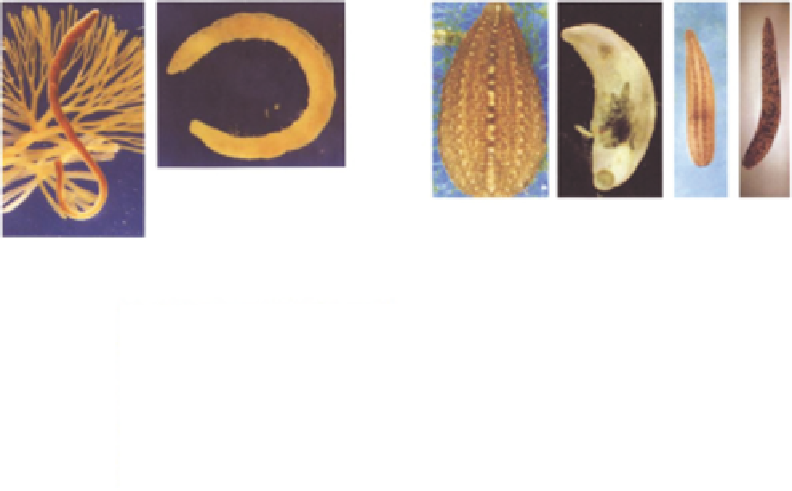Environmental Engineering Reference
In-Depth Information
(c) Zebra mussels on clam
(b) Zebra mussels on crayfish
(a)
Zebra mussels cover a current
meter in Lake Michigan
FIGURE 6.15
(a-c) Zebra mussels. ((a) From NOAA, http://www.noaa.gov/features/earthobs_0508/zebra.
html; (b,c) From USGS, http://sfbay.wr.usgs.gov/benthic_eco/exotic_species/next.html.)
Ologichaetes (left is
Lumbriculidae, right
Specaria josinae
)
Leeches (left to right
Placobdella montifera
,
ventral view of a glossiphoniid leech carrying
young,
Erpobdella punctata
and
Nephelopis
obscura
)
Nematomorpha
(
Gordius
)
FIGURE 6.16
Examples of worms and leeches. (From Clifford, H.,
Aquatic Invertebrates of Alberta
,
University of Alberta Press, Edmonton, Alberta, Canada, 1991. With permission.)
a detailed taxonomic identiication is expensive and time consuming, requiring on the order of
10 hours or more in the laboratory for each hour in the ield collecting samples.
Some methods for measuring aquatic health, as will be discussed in Chapter 7, require a
certain level of taxonomic classiication. For example, the U.S. EPA's Rapid Bioassessment
Protocols (RBP; Barbour et al. 1999) indicates that most organisms are identiied at the “lowest
practical level (generally genus or species) by a qualiied taxonomist using a dissecting micro-
scope.” The RBP also include, rather than a taxonomic assessment, a functional characterization



Search WWH ::

Custom Search